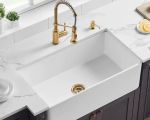1. Why Tile and Grout Matter in Bathroom Remodels
When I first decided to remodel my bathroom, I wasn’t sure where to start. The walls and floors were covered in outdated, cracked tile, and the grout was grimy and worn. I knew that upgrading the tile and grout would make a huge difference, but I wasn’t prepared for how much of an impact it would have on the overall look and feel of the space.
Tile and grout are crucial elements of a bathroom remodel, and getting them right can completely transform the space. Whether you’re updating an old design or starting fresh with a full remodel, these upgrades can boost your bathroom’s aesthetic and functionality.
2. Planning Your Bathroom Tile and Grout Remodel
Before diving into the remodel, I realized that a little planning goes a long way. My first step was to choose the type of tile that would best suit my bathroom's style and needs. There are a variety of options, from ceramic and porcelain to natural stone and glass tiles. The tile you choose should not only match your design preferences but also be durable and water-resistant.
When selecting grout, I discovered that the color and type of grout can make a big difference in the final result. I opted for a darker grout to contrast with my light-colored tiles, creating a more modern and sophisticated look. It’s also important to consider the type of grout—whether you go with sanded or unsanded grout, it should match your tile material for optimal performance.
2.1 Choosing the Right Tile
There’s no shortage of tile choices, but I knew that I wanted something that would complement my bathroom’s overall aesthetic. I chose a large-format porcelain tile for the floor, which provided a clean, contemporary look. For the walls, I went with subway tiles because they are timeless and versatile.
When choosing tiles, don’t forget to factor in the size of your bathroom. Larger tiles can make a small bathroom feel more spacious, while smaller tiles can add intricate patterns and textures. I found that mixing different tile sizes, like using mosaic accents in the shower area, added an extra touch of style without overwhelming the space.
2.2 Picking the Right Grout
Choosing the right grout was almost as important as selecting the tiles. I wanted something that would complement the look of the tile while also being durable enough to withstand the moisture and humidity typical in bathrooms. After some research, I decided on epoxy grout because it is stain-resistant and highly durable, making it perfect for high-moisture areas like showers and floors.
The grout color was another decision that took time. I opted for a darker gray grout to create contrast with my white subway tiles. Darker grout helps hide dirt and stains, which was a big plus for me since bathrooms tend to accumulate grime quickly.
3. DIY vs. Hiring a Professional for Tile and Grout Work
One of the biggest decisions I faced was whether to tackle the tile and grout upgrades myself or hire a professional. After weighing the pros and cons, I decided to try the remodel myself. With a few tutorials and a little patience, I was able to install the tiles and grout with a great deal of success. However, I quickly realized that while DIY is rewarding, it’s not always the best option for every homeowner.
If you're considering DIY tile installation, keep in mind that it requires precision and attention to detail. If you’re not confident in your abilities, hiring a professional might be the better choice to ensure a clean, polished finish. That said, there are plenty of DIY-friendly tutorials and resources out there if you decide to take on the project yourself.
3.1 Tile Installation: Step-by-Step
For those who want to try DIY, here’s a basic rundown of the process. First, I prepared the surface by cleaning and leveling the floor and walls. Next, I mixed the thin-set mortar according to the manufacturer’s instructions, then applied it evenly with a notched trowel. After that, I began placing the tiles, starting from the center of the room and working outward. I used spacers to ensure consistent grout lines and allowed the mortar to set for 24 hours.
Once the tiles were set, I applied the grout. I used a rubber float to spread the grout into the spaces between the tiles, wiping off excess as I went. The final step was to seal the grout to prevent water penetration and staining.
3.2 When to Hire a Professional
If you’re not comfortable with tools or the idea of measuring and cutting tiles to fit, it might be best to hire a professional. Tile installation requires precision, and a slight miscalculation can lead to crooked tiles or uneven grout lines. Additionally, a professional can ensure the job is done quickly and correctly, leaving you with more time to focus on other parts of your bathroom remodel.
4. Maintaining Your New Bathroom Tile and Grout
After my remodel was complete, I realized that maintaining the tile and grout was just as important as the installation. The last thing I wanted was for my hard work to be ruined by dirt and stains. I learned that regular cleaning and sealing are key to keeping the tile and grout looking fresh and new.
For cleaning, I use a gentle, pH-balanced cleaner that won’t damage the grout. I also scrub the grout lines with a soft brush to keep them looking bright. I make sure to reseal the grout every 6-12 months to protect it from moisture and stains, which has helped my bathroom remain pristine for years.
4.1 Sealing the Grout
Grout sealing is a must-do to ensure long-lasting durability. I applied a grout sealer after the tiles were set and the grout had cured. This protective layer helps prevent water from seeping into the grout, which can cause mold and mildew. It’s important to choose a high-quality sealer, as this will ensure it lasts and works effectively over time.
4.2 Regular Cleaning Tips
One thing I learned quickly was the importance of regular cleaning. While grout sealer protects against stains, regular cleaning prevents dirt buildup that can dull the surface. I make a habit of wiping down the tiles after every shower, which helps maintain their shine and keeps my bathroom looking fresh.
5. Real-Life Experience: My Bathroom Remodel Journey
My bathroom remodel wasn’t without its challenges, but the end result was completely worth it. I learned so much about tile and grout along the way, and I can honestly say the process was rewarding. From selecting the perfect tile to applying grout, each step was a learning experience that gave me the bathroom I’d always dreamed of.
If you’re thinking of remodeling your bathroom with tile and grout upgrades, don’t be afraid to get started! With the right preparation, materials, and a little patience, you can transform your bathroom into a beautiful and functional space that will last for years to come.








